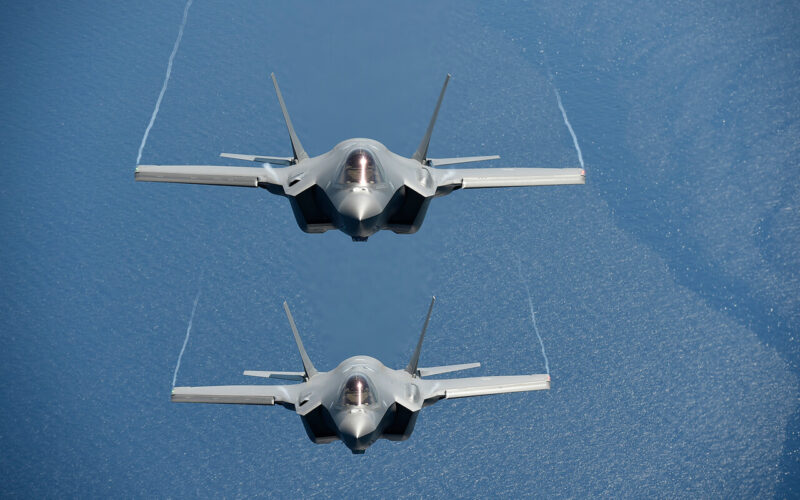On May 14, 2021, an Antonov An-12 turboprop belonging to the Russian Air Force was intercepted near the Estonian coast by two Italian Lockheed-Martin F-35A Lightning II fighters carried out the mission. It is the first time that the fifth-generation stealth fighter jet carried out a mission on behalf of NATO’s Baltic Air Policing mission.
An aircraft, flying from the Russian airspace to the Kaliningrad enclave with its transponder off, was tracked by the Combined Air Operations Centre at Uedem, Germany.
Two Lockheed-Martin F-35A Lightning II fighter jets belonging to the Aéronautica Militare, the Italian Air Force, were scrambled from Ämari Air Base in Estonia, where they are stationed since May 1, 2021.
As they arrived near the plane, they identified an Antonov An-12 transport aircraft of the Russian Air Force. “The Russian military transport plane was flying over international waters close to the Estonian coast,” NATO explained in a statement. “It was not on a flight plan and not sending a transponder signal causing a potential risk to other airspace users.” The Italian fighter jets escorted the plane until it reached the airspace of Kaliningrad.
While intercepts of Russian aircraft are frequent near the airspaces of the Baltic states, this was the first one to be carried out by the Italian Air Force since their most recent deployment, which means that it was also the first time that the F-35A Lightning II was used in real conditions in the framework of NATO’s Baltic Air Policing mission.
The Baltic Air Policing mission started in 2004 when the Baltic States joined NATO. It is one of the main missions of NATO air forces, which protects Estonian, Latvian, and Lithuanian airspaces from incursions, as these countries have no airborne capability of their own.
In 2020, NATO air forces across Europe reported having scrambled more than 400 times to intercept unknown aircraft approaching the airspace they cover. Almost 90% of these missions ‒ around 350 ‒ were Russian military aircraft.

